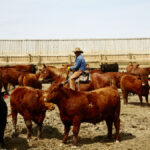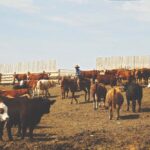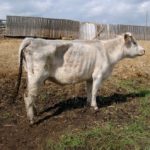
CARVE beefs up its offerings
While the pandemic has presented challenges, the people behind this made-in-Ontario beef brand are confident about its future prospects

Research may yield new approaches to managing pneumonia in cattle
Researchers are now focusing on inflammation’s role in pneumonia cases in cattle

New livestock transport rules may cause tie-ups at rest stops
A lack of capacity at rest stops for calves moving to Eastern Canada has some Ontario feedlots looking south for cattle

Financing for first-timers
Two bankers offer tips for young producers preparing to talk to a lender

Livestock research a high priority for VIDO
COVID has highlighted the need to connect human and animal health, and for resources to address pandemics in either sphere

New nasal spray may provide relief from BRD
By focusing on the microbiome in the respiratory system, a new startup hopes to control shipping fever without antibiotics

Pandemic-battered beef industry may still be in for a rough ride
While Cargill has improved its pandemic protocols, the union representing plant workers wants to see more changes as they head into contract negotiations this winter

Whither the wind: How to decide on windbreaks
Find out what your options are for protecting your herd from wind and snow this winter
Find out what your options are for protecting your herd from wind and snow this winter
If beef producers want to have healthy, productive herds, making sure they’re protected from the wind is crucial, says Jenifer Heyden. “We want the cattle to be able to maintain condition on cold, windy days,” says the livestock and feed extension specialist with the Government of Saskatchewan. While beef cattle are tough, and can handle […] Read more
Surviving the pandemic on a small beef farm
When COVID-19 struck, the Tait family pivoted their retail strategy, and some of those adaptions will serve them in the long-term

Developing a vaccine to combat Johne’s disease
Canadian researchers are trialling vaccine candidates, and plan to have results in the fall


